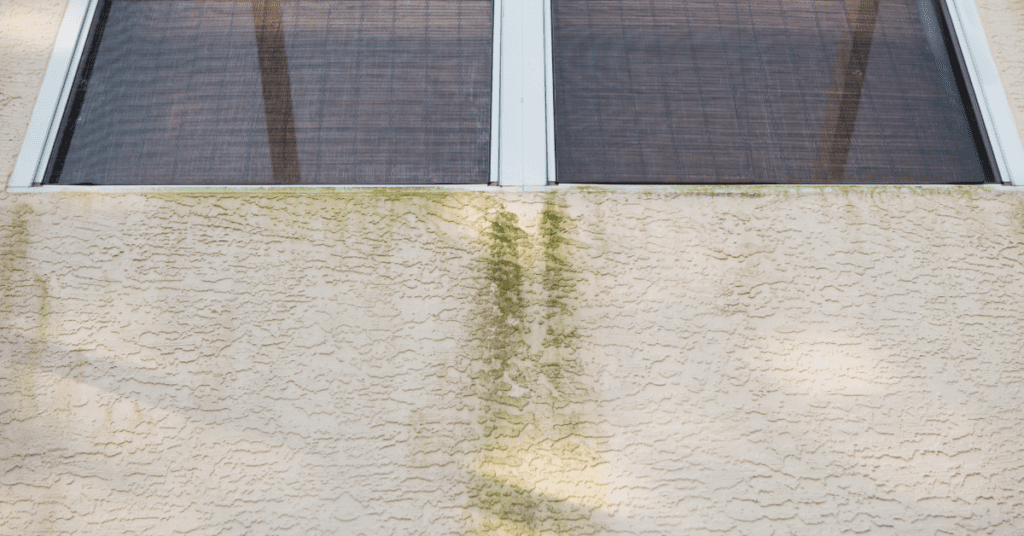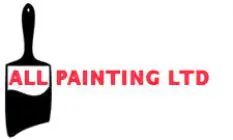As the summer season approaches, it’s essential for homeowners with stucco exteriors to prioritize proper maintenance. Stucco is a durable and long-lasting material that adds a beautiful aesthetic to any home.
However, neglecting regular upkeep can result in damage, leading to costly repairs. In this stucco maintenance guide, we will provide you with a checklist of tasks to ensure your stucco remains in top condition throughout the summer months.
What are some common signs of stucco damage?

Understanding the signs of stucco damage can help you identify potential issues early on. Here are some common signs to look out for:
- Stucco cracks: Cracks in your stucco can occur due to various factors, such as settling or moisture damage. Hairline cracks are less concerning, but larger cracks may indicate an underlying problem that needs repair.
- Stucco stains: Stains on your stucco can be caused by rust or other factors. It is essential to address these stains promptly to prevent further damage.
- Stucco moss: Moss growth on your stucco can indicate excessive moisture retention, which can lead to long-term damage if not addressed.
- Stucco crumbles: If you notice portions of your stucco crumbling or deteriorating, it may be a sign of moisture infiltration or aging. Timely repairs are necessary to prevent further deterioration.
- Stucco indentations or soft spots: Indentations or soft spots on your stucco can indicate underlying damage or moisture-related issues. These areas should be inspected and repaired as needed.
- Impact damage: Accidental impacts, such as from hail, overgrown tree branches, or heavy objects, can cause visible damage to your stucco. If you suspect damage from trees, it might be worth consulting with an arborist to prevent future incidents. Inspect your stucco after any significant weather events or situations that may have caused impact damage.
What are the key areas to focus on?
When it comes to maintaining your stucco during the summer, there are a few key areas to look at:
1. Check your caulking for pliability
Over time, caulking can become brittle and cracked, which opens up opportunities for moisture to seep into your stucco. Inspect the caulking around windows, doors, and other penetrations to ensure it is in good condition and pliable. If you notice any issues, it’s advisable to re-caulk those areas. While you’re at it, you might also consider refreshing your home’s exterior paint. Check out our guide on ‘Exterior Painting: How to Add Curb Appeal to Your Home’ for tips and tricks.
2. Look for unsightly mildew
The summer heat and humidity can create a perfect environment for mildew growth on stucco surfaces. Regularly inspect your stucco for any signs of mildew or discoloration. If you do find mildew, clean it off using a mild soap and water solution to prevent it from spreading.

3. Check for rust stains, cracks, and fading paint
Rust stains, cracks, and fading paint are common issues that can arise with stucco exteriors. Inspect your stucco for any signs of rust stains caused by metal components coming into contact with the stucco. Additionally, look for any cracks or areas where the paint is fading, as this may indicate underlying damage that needs attention.
What basic stucco maintenance tasks should I be aware of?
Regular maintenance is key to preserving the integrity and appearance of your stucco. Here are some essential stucco maintenance tasks to keep in mind:
1. Regular cleaning: Stucco is porous and can absorb stains over time. To prevent your home from looking dirty, it is recommended to clean your stucco 2 to 3 times a year.
– Garden Hose: Start at the bottom of the wall and work your way up, wetting the wall initially. Then, during the cleaning process, work your way down from the top using a garden hose.
2. Cleaning agents: If additional cleaning power is needed, consider using dish soap and water. In cases of mold or mildew, a bleach and water mixture can be effective. Take care when using bleach to avoid harming surrounding plants, and always dilute it properly. Before deciding to power wash your home, it’s worth checking out our guide on ‘Should I Power Wash My House Before Painting It?’ for more information.
3. Seal it up: Stucco should be sealed every 5 years to prevent moisture intrusion. When stucco is initially applied, a clear concrete masonry sealer is typically used to protect against moisture. Reapply a compatible sealer every few years to maintain its effectiveness.
– Paint: If your stucco has been painted, pay extra attention to the condition of the paint. Look for bubbling or peeling, and remove any loose paint during the cleaning process. Seal major cracks before painting, and use urethane and acrylic resin-based paint for increased strength and flexibility. To understand more about different types of paints and their uses, read our article ‘The Different Types of Interior Paint’.
4. Sealing up the cracks: Older homes with stucco are more prone to hairline cracks. Consider applying an elastomeric paint specifically formulated for stucco. These coatings work to keep moisture out and can also seal up hairline fractures. For more on why elastomeric paint is beneficial in areas exposed to moisture, like bathrooms, check our post ‘What Type of Paint Should You Use in a Bathroom?’
– Bigger cracks: For more substantial cracks, apply a patch after removing any moisture. This will seal the area and prevent further damage.
5. Don’t delay repairs: As stucco ages, it may develop cracks, holes, or chips. These imperfections not only detract from the appearance of your home but also compromise the stucco’s integrity. Cracks can continue to grow if left unrepaired, creating a conducive environment for mold and mildew. Promptly address any damage to maintain the structural soundness of your stucco.
What is the best approach for inspecting the stucco on my home?
While you can perform a visual inspection yourself, it’s recommended to have a professional stucco inspector assess your home for any potential issues. Professional home inspectors specializing in stucco have the expertise to identify problems that may not be apparent to the untrained eye. Here is an overview of what a stucco inspector may do:
1. Visual inspection: he inspector will thoroughly examine the stucco on your home, paying close attention to signs of moisture, such as staining, cracks, improper flashing, and stucco running below grade. To understand more about when stucco issues require repair or a complete replacement, check out our article ‘Is It Better to Repair or Replace Stucco?‘
2. Moisture probes: To determine the moisture levels in specific areas, the inspector may use moisture probes. These involve drilling small holes and inserting a moisture probe to assess the moisture content. The probe holes are then filled with a silicone caulk that matches the color of the stucco, blending into the system.

3. Thermal imaging: Infrared technology can often reveal areas with excessive moisture, which can cause problems within the stucco. By using thermal imaging, an inspector can identify potential moisture-related issues that may not be visible to the naked eye.
How frequently should I schedule a stucco inspection?
Ideally, you should have a basic stucco inspection performed annually or every few years, depending on your location. Homes situated in wetter, low-lying areas are more prone to mold and mildew formation, making them more susceptible to stucco damage. Therefore, regular inspections are crucial in these areas to ensure any issues are promptly addressed. Homes in dryer areas with better airflow may require less frequent inspections, but it is still important to stay vigilant.
How can I keep my stucco looking in top condition?
To ensure your stucco remains in excellent condition, consider the following tips:
– Keep it clean: Regularly washing your stucco can make a significant difference in its overall appearance and resilience. Stucco’s porous surface can trap dirt and moisture, leading to stains or mold growth. Regularly washing your stucco will help maintain its aesthetic appeal.
By following this summertime stucco maintenance checklist, you can keep your stucco in top condition and ensure its longevity. Remember to conduct regular inspections, address any signs of damage promptly, and perform routine cleaning and sealing tasks to protect your investment. With proper maintenance, your stucco will continue to enhance the beauty of your home for years to come.
In conclusion, stucco maintenance is a vital aspect of homeownership, particularly during the summer months. Following the checklist provided will help you address potential issues, maintain the integrity of your stucco, and ensure your home remains beautiful and protected. Regular inspections, cleaning, sealing, and timely repairs will contribute to the longevity and aesthetics of your stucco exterior. With proper care and maintenance, you can enjoy the benefits of a well-maintained stucco system for years to come. To further understand the lifespan and durability of stucco, read our detailed article ‘What Is the Lifespan of Stucco?’
As summer approaches, remember that we are here to help with your stucco maintenance needs, no matter where you are in the lower mainland. Our Maple Ridge painters, Langley painters, Richmond painters, New Westminster painters, West Vancouver painters, North Vancouver painters, Port Coquitlam painters, Coquitlam painters, Port Moody painters, Surrey painters, Burnaby painters, and Vancouver painters are proudly serving homeowners. Check out our city pages to learn more about the range of services we offer in your area. Contact us today to schedule a consultation and keep your home’s stucco exterior looking its best this summer!

